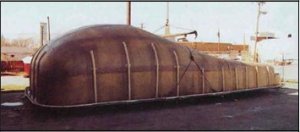The San Juan Manufacturing Process
San Juan Pools are manufactured over a mold by a fiberglass process known as hand lay up fabrication.This is a step by step handcrafting method that literally builds a pool over a mold from the inside out.
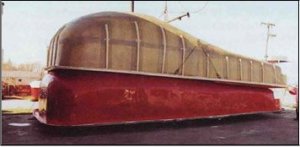
After the fabrication process, the pool is released from the mold with air pressure and removed by an overhead hoist. The pool is inspected, dressed out and outfitted with the necessary fittings.
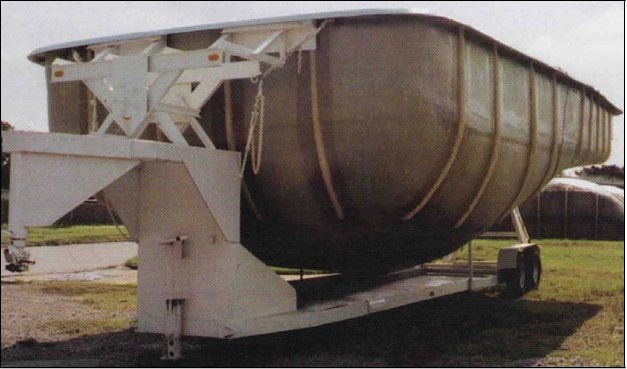
San Juan Pools as manufactured in Tulsa are the strongest and most durable fiberglass pools in the industry.
Each and every pool is entirely laminated by hand with multiple layers of fiberglass mat and fiberglass woven roving and premium resin.
A critical final step in the fabrication process is the lamination of structural reinforcement ribs all around the outside of the pool. This increases the overall strength of the pool dramatically.
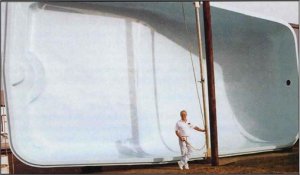
The result is beautiful. A big shiny fiberglass pool molded all in one piece with many obvious and unique advantages over old fashioned pools. Built for a lifetime. Nobody does it better.
The Best Fiberglass Pools Start With the Best Materials
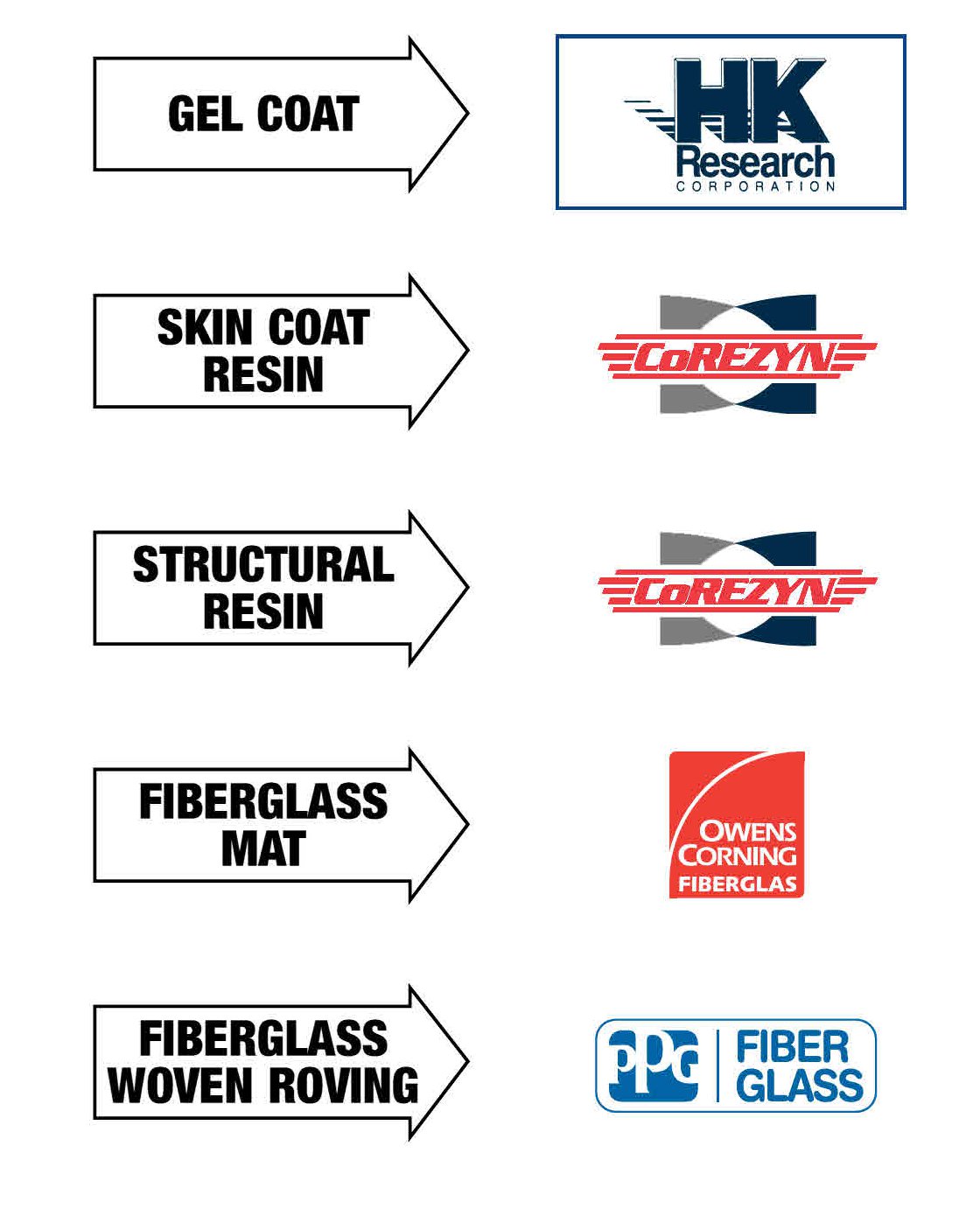
Gel Coat
The interior finish of the pool is not paint, but gel coat, the same finish common to all fiberglass boats. Gel coat is a pigmented resin-based material that forms a smooth, glossy finish. It is extremely durable and corosion-resistant.
People who are not familiar with the fiberglass process assume that this coating is applied at the final stage of the manufacturing process, but, in fact, it is sprayed on the mold first, not last.
Before the application of the gel coat, the mold is carefully buffed and hand polished with mold wax. This is done to produce a smooth, glossy finish inside the pool. The mold wax also allows the pool, when completed, to slip loose from the mold.
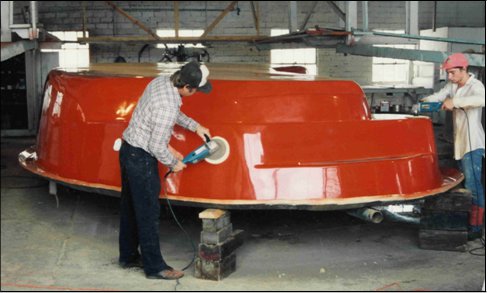
The gel coat, which is a highly viscous material, is spray applied over the entire surface of the mold to a thickness of about 25 mils. The gel coat is mixed with a catalyzing agent as it is sprayed, which initiates the chemical curing process. The cured gel coat becomes the interior finish of the pool, and then the fiberglass material is bonded on to the outside surface of the gel coat with laminating resin.
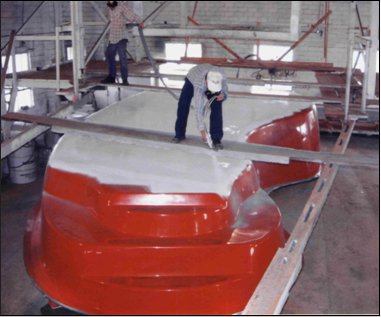
The gel coat forms a tough and durable finish that is highly corrosion resistant. Gel coat is shipped to the manufacturer in 55 gallon drums. San Juan uses gel coat produced by HK Research Corporation.

Makers of
HYDROSHIELD® 100% NPG/1SO MARINE GEL COAT
HK operates a state of the art gel coat production facility and, as the name implies, they are strong in research and development.
They have gel coat technical experts that don’t just sit behind desks at the home office; they visit fiberglass fabrication shops across the country. The goal is to make sure that every gel coat application process with HK material is the best that it can be.

NPG® is a registered trademark of the Eastman Kodak Company. It is a particular resin formulation known as Neopentyl Glycol that was developed by the Industrial Chemicals Division of the Eastman Kodak Company many years ago. Eastman Kodak does not produce gel coat.
When NPG is blended with the formulation of isophthalic polyester gel coat, it dramatically enhances the underwater blister resistance and the durability of the finished gel coat surface of fiberglass reinforced composite products exposed to severe operating conditions such as swimming pools.
This exclusive 100% NPG/ISO Marine Gel Coat is available only from HK Research and it is the best you can buy, made to withstand the test of time, especially under water. HYDROSHIELD gel coats provide maximum resistance to black cobalt stains, blistering and delamination.
Laminating Resins
Synthetic resins are a myriad and diverse group of petrochemical raw materials used in the manufacture of just about anything imaginable that contains any type of plastic.
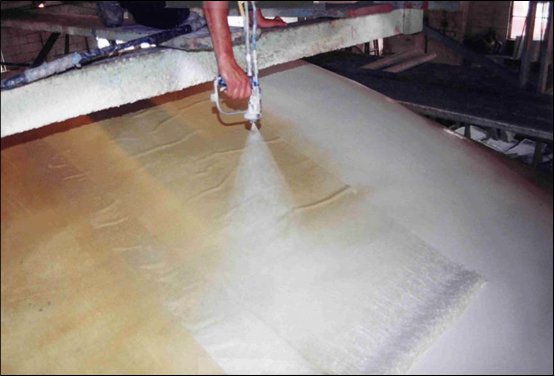
The fiberglass industry uses a thermoset resin, which means that once it is cured into a solid hardened state, it is irreversible and it cannot be melted down with heat, as opposed to thermoplastic resin, which can be reversed with heat. More specifically, San Juan fiberglass pools are manufactured with epoxy based Vinyl Ester skin coat laminating resin and Isophthalic Polyester structural laminating resin.
Resins are the matrix that encapsulates the glass fibers. These materials are delivered to the manufacturer in 55 gallon drums. San Juan uses epoxy based Vinyl Ester skin coat laminating resin and Isophthalic Polyester structural laminating resin produced by the Interplastic Corporation.

Producers of Premium Laminating Resins for the Fiberglass Industry Since 1959

Marine Grade High Performance Vinyl Ester
Skin Coat/Barrier Coat Laminating Resin
This Vinyl Ester resin is specifically formulated for that critical first layer of fiberglass laminated to the gel coat for maximum protection against blistering and delamination of gel coat.
Interplastic has the most extensive line of Vinyl Ester resins in the industry. Vinyl Ester resins are epoxy based laminating resins with the advantages of epoxies:
- High corrosion resistance
- Outstanding adhesive bonding properties
- Maximum protection against water blistering
Vinyl Esters also have these advantages of polyester laminating resins:
- Saturates fiberglass material well and easy to laminate
- None of the hazardous toxicity levels of uncured epoxies
- Compatible with polyester catalysts and polyester curing times

Premium Grade Isophthalic Polyester
Laminating Resin
The Interplastic Corporation has been producing premium laminating resins for the fiberglass industry since 1959 and has become one of the largest such producers in the world.
Compared to the ordinary general purpose orthophthalic resins commonly used in the fiberglass industry, Isophthalic Polyester resins have a number of advantages:
- More resilience
- Greater flexibility
- Increased toughness
- Superior corrosion resistance, especially against alkalis often present in soils
The highest quality Isophthalic Polyester resins cannot be produced with shortcuts. All CoREZYN Isophthalics are produced according to the exacting formulas of the Interplastic two stage batch reaction technique. This process produces Iso Polyester laminating resin with the maximum strength and toughness and corrosion resistance of the completed fiberglass laminate.
Fiberglass Mat
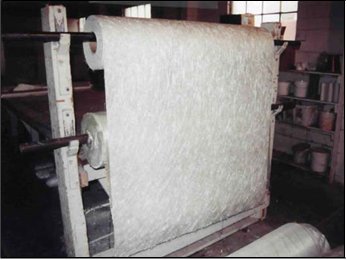
Fiberglass is made from molten glass that is drawn into long fibers that are thinner than human hair. To form fiberglass mat material, the fibers are cut into short lengths and randomly pressed together with a binder to form a sheet of felt-like material. For shipping and handling the mat is coiled into rolls like carpeting and delivered to fabrication shops as roll goods. These rolls can be as short as one foot or as long as ten feet.
This material is easily saturated with resin. Fiberglass mat is not as strong as fiberglass woven roving, but it has superior bonding characteristics. Mat is available in about a dozen different thicknesses, depending upon the requirements of the product to be manufactured. Mat is classified by weight per square foot of material, ranging from a thin ¾ ounce to a thick 4½ ounces per square foot. San Juan uses 1½ ounce material in rolls 50 inches wide manufactured by Owens Corning.

The Owens-Corning Corporation is the undisputed leader in the production of fiberglass materials. It was founded in 1938 as a joint venture by two other companies, the Corning Glass Works, Inc. and the Owens-Illinois Glass Company. Both companies, competitors in the glass container industry, had been doing separate research and development on glass fibers as a reinforcement material for the new plastics industry.
The combination of the two research teams quickly paid off and the fiberglass industry was born. There soon became a critical demand for this new material by the military during the Second World War. After that, demand continued to grow for fiberglass boats and many other products made with this new revolutionary material.
Fiberglass Woven Roving
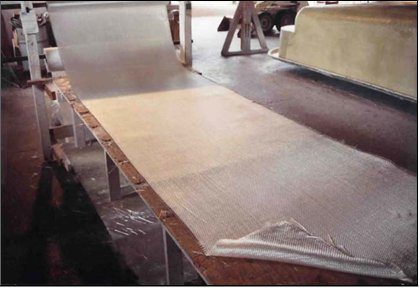
This type of fiberglass is made of long glass fibers stranded together and then interwoven crosswise to form a burlap-like fiberglass fabric, which makes an especially strong type of fiberglass reinforcement. Like the mat, this material is also packaged as roll goods that range from one foot to ten feet wide.
The glass fibers increase the strength of the composite in the same manner as steel reinforcing rods increase the strength of concrete. The synergy created by this combination of mat and roving and resin is outstanding and the result is a composite with exceptional properties of strength, flexibility and durability.
Fiberglass woven roving is also available in about a dozen different thicknesses. Roving is classified by weight per square yard, ranging from 15 ounces to 48 ounces per square yard. San Juan uses 24 ounce material in rolls 50 inches wide manufactured by PPG Industries.
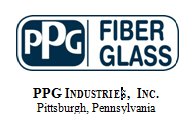
PPG Industries, Inc. was founded in 1883 as the Pittsburgh Plate Glass Company. It is the third largest manufacturer of flat glass in the world. The company has been producing fiberglass materials since 1952, and it is the second largest producer of fiberglass in the world.
The San Juan Skin Coat Application
- The first layer of material bonded to the gel coat is called the skin coat or barrier coat and it is the most critical step in the lay up process of the pool for maximum protection against blistering and delamination of the gel coat. It is important that this first layer is a good grade of fiberglass mat material. Mat is not as strong as woven roving, but it is easily saturated with resin and it has superior bonding characteristics. It is equally important that the skin coat laminating resin is a premium grade epoxy based Vinyl Ester resin, which also has superior bonding characteristics.
- The fiberglass mat material is unrolled and cut into sections that can be handled and applied to the mold a section at a time by one or two fiberglass workers.
- Before a section of the mat is laid up on the gel coated mold, that area of the mold is sprayed with an undercoat of epoxy based Vinyl Ester resin. As with the gel coat, catalyst is mixed with the resin to start the curing process.
- The mat is then laid up on that area of the undercoated mold and then it is thoroughly saturated by spraying an overcoating of Vinyl Ester resin all over the outside surface of the mat.
- The resin is carefully worked into the mat and bonded to the gel coated mold by hand with laminating workers using hand rollers, brushes and squeegees. This is why this process is called hand lay up. This process continues, one section of fiberglass mat at a time, until the entire gel coated surface of the mold is completely laminated over, in a quilt-like pattern, with one layer of the fiberglass mat. Care is taken to make sure that the outer edges of each section of mat are overlapped by the next section. This produces a double layer at the edges of each section.
- The quality and durability of the interior gel coat finish of the pool is dependent upon the following five factors:
- The quality of the mold
- The quality of the gel coat
- The quality of the fiberglass mat
- The quality of the skin coat resin
- The expertise of the gel coating and laminating crew
Just in the gel coat and skin coat application alone, there are all kinds of ways to cut corners to make a cheaper pool, and it is vertually impossible for even the most sophisticated buyer to know the difference. The adverse consequences of this may not show up immediately, but sooner or later the problems will surface.
The San Juan Structural Lay Up Process
- Following the skin coat application, the balance of the structure is laminated with Isophthalic Polyester resin. The second layer of material is also fiberglass mat just like the skin coat and it is laminated on exactly like the first layer except with Iso Polyester resin instead of Vinyl Ester.
- Fiberglass woven roving is used for the third layer of material and it is applied in the same manner as the first two layers.
- The fourth layer is fiberglass mat and the last layer is woven roving. They are laminated in the same manner as the previous three layers.
- Alternating the layers of mat and roving is an essential part of the workmanship process. Mat has excellent bonding properties and roving has high strength, so the two types of fiberglass and the two types of resins complement each other very well and the resulting synergy creates a strong, resilient and durable composite material ideal for swimming pools.
- The final step in the lay up process consists of laminating structural reinforcement ribs to the pool. The structural reinforcement ribs are made from schedule 40 two inch PVC pipe, which is cut in half and then notches are cut across the pipe so that they can be bent to conform to the contour of the walls of the pool. The half round sections are then laminated to the pool with four layers of material, mat and roving, mat and roving, respectively.
- This brings the total number of layers of fiberglass to nine in the areas of the pool where the ribs are laminated on to it.
- The lamination of structural reinforcement ribs increases the overall strength of the pool dramatically.
Notice the reinforcing ribs laminated on these fiberglass gasoline storage tanks.
Most storage tanks today are fiberglass instead of steel, because they won't rust or corrode when buried in the gound.
All Fiberglass Pools Are Not The Same
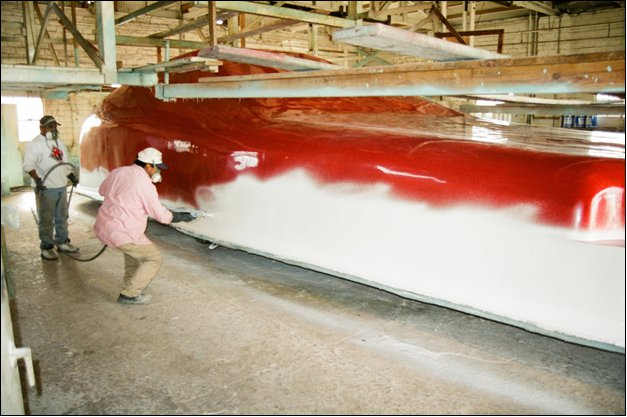
Of all the raw materials used to manufacture fiberglass pools, gel coat is by far the most expensive per pound. If a manufacturer wants to cut costs, this is a good place to start, because on a brand new pool, ordinary gel coat looks just exactly like the best gel coat that money can buy. But just wait 24 or 36 months and you will see a big difference. Premium gel coat won’t produce water blisters and black cobalt stains, and ordinary gel coat will.
***
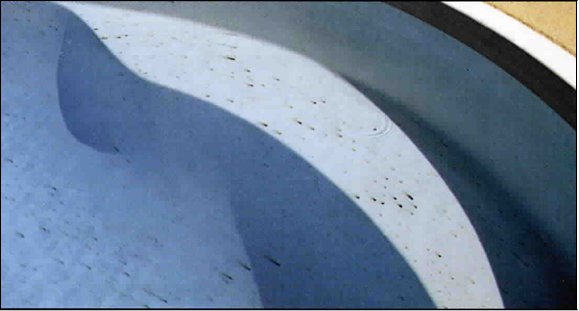
This pool has black cobalt stains. It looks like black algae, but it isn’t, and it usually forms only after the pool has been filled with water for two or three years.
Sometimes the cobalt stains can multiply and grow larger in size. This is unsightly but causes no structural damage to the pool.
***
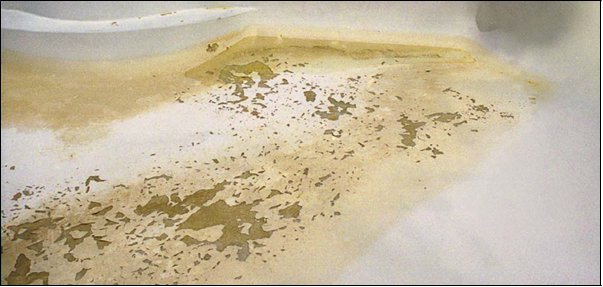
Another problem related to the skin coat/barrier coat application process is delamination of the gel coat, as shown here, which may take as long as ten years to occur.
***
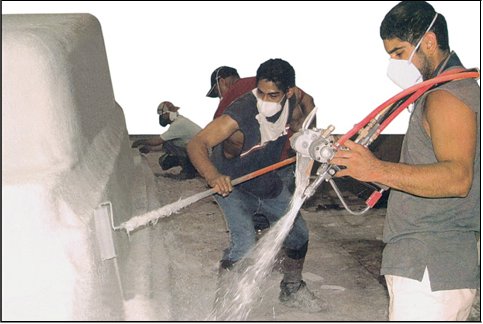
Some manufacturers employ the chopper gun technique, which sprays short strands of glass fibers mixed with resin onto the gel coated mold. This is the standard procedure for making fiberglass spas and it is a much faster and cheaper way of fiberglass fabrication.
However, an in ground pool can be exposed to a lot more stress than a hot tub. Pools laminated entirely by the chopper gun method will have far less strength than a San Juan pool made by the hand lay up method of multiple layers of fiberglass mat and fiberglass woven roving.
***
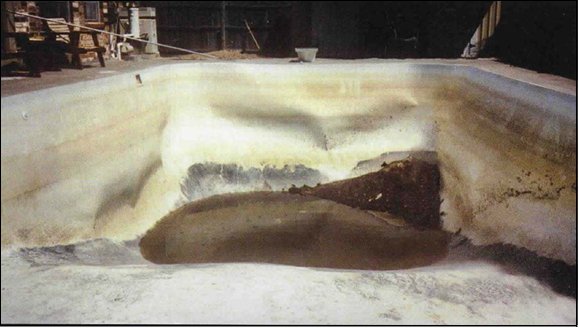
This fiberglass pool was removed and replaced with a San Juan pool. The pool was originally fabricated entirely by the chopper gun method and had no structural reinforcement ribs.
***
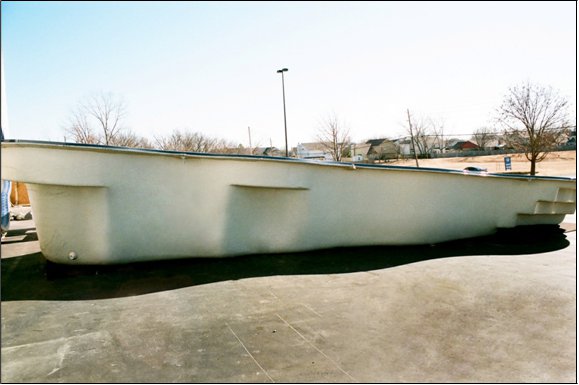
Many fiberglass pool manufacturers do not laminate structural reinforcement ribs to the pool shell, a critical strengthening procedure that San Juan pioneered thirty years ago. A pool without such reinforcements is more likely to suffer structural bulging or buckling.
***
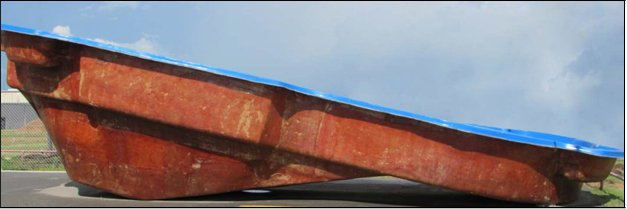
There are two reasons why many fiberglass pool makers do not fabricate pools with structural reinforcement ribs. The first reason is that this strengthening procedure increases the cost of the pool.
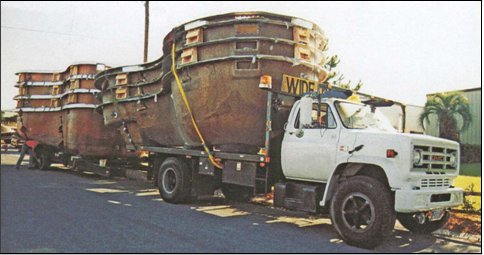
The second reason has to do with shipping costs, which can be very expensive, so many pool makers prefer to haul more than one pool at a time by stacking pools together on a trailer. San Juan pools with laminated structural reinforcement ribs do not stack together well on a trailer and are best hauled one pool at a time.
***

The side of this fiberglass pool has caved in. Notice the lack of structural reinforcement ribs.
***
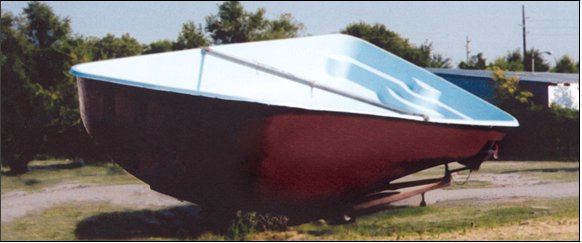
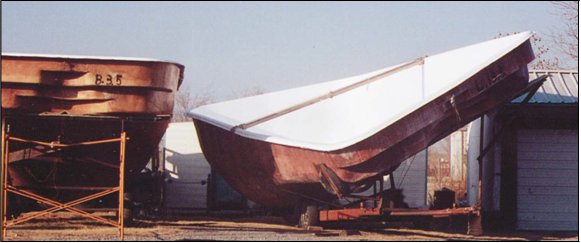
When a San Juan pool is tilted on a trailer, it will not significantly warp out of
shape as these pools have.
***
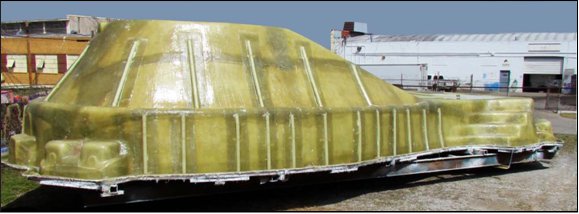
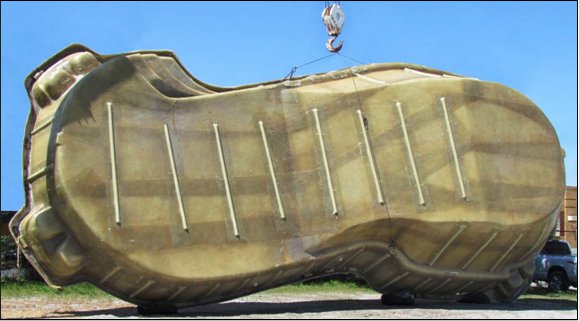
The manufacture of a premium quality fiberglass pool is not rocket science, but it does require strong commitment and dedication on the part of the manufacturer to resist shortcuts in workmanship and materials by insisting upon enough fiberglass layers and laminated reinforcement ribs to produce a strong, durable and trouble free fiberglass pool.
***
All fiberglass pools are not the same. The quality and cost can vary considerably, and it is difficult for even the best informed consumers to determine what they are really getting for their money.
A heavier built pool is more durable and costs more because fiberglass raw materials are bought by the pound. The consumer, however, is operating in the dark, with no way to check the actual weight of any pool and no way to check the actual quality of the raw materials used.
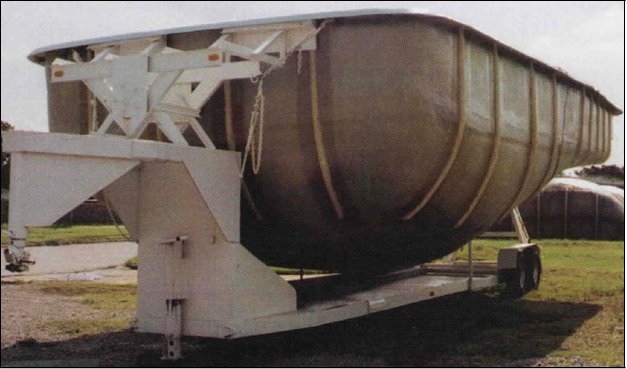
The best way to avoid buying a pig in a poke is to deal with a well established manufacturer. San Juan Pools of Oklahoma, Inc. is the oldest manufacturer of fiberglass pools in the United States.


